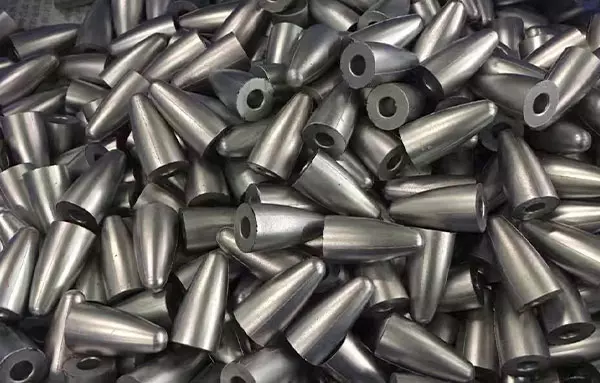
Four Steps of Hard Alloy Cemented Carbide Cutting Burr Mold Manufacturing
The key points that should be paid attention to in processing of Hard Alloy Cemented Carbide Cutting Burr wire drawing die blanks and die sleeves and core assembly process; manufacturing is mainly divided into four steps:
1. mold blank processing;
2. assembly interference;
3 .Drawing die set processing;
4. Assembly process

1 Mold blank processing
Cemented carbide wire drawing die cores will shrink during the sintering process. Different batch numbers have different shrinkage due to differences in composition, pressing, and sintering processes; different parts of die blank often form a “saddle” due to different shrinkage. Or “bell mouth” shape. Although fluctuation of die blank’s dimensions meets the standard of die blank, it far exceeds the interference requirement of die set, which causes serious unevenness in prestressing of die core during assembly and greatly reduces the service life of die. Therefore, die blank must be for external cylindrical grinding, a special fixture is required on the grinder and a diamond wheel is used for grinding.

2 Interference of installation
In order to obtain a certain prestress of mold core during installation, the inner hole diameter of the mold sleeve must be smaller than the outer diameter of the mold core, and the difference between the two is called interference. The amount of interference should be determined according to die core size and deviation, drawing stress, and inserting method. Table 1 shows actual interference when mold is installed. The die set is inlaid with two kinds of hot pressing method and cold pressing method. The cold pressing method has a small interference and small pre-pressing stress. It is mostly used to manufacture small-sized wire drawing dies for drawing soft metals.

3 Mold sleeve processing
The die sleeve is formed by turning on a lathe, and control points during processing are as follows:
(I) Inner diameter roughness of die sleeve must reach 0.80-I. 6 m, which is conducive to close cooperation with mold sleeve;
(2) Inner diameter of the mold sleeve must correspond to the outer diameter of the mold blank to ensure accuracy of interference of each mold;
(3) Bottom surface of the inner hole of the mold sleeve and the outer end of the mold must be parallel, and ensure that it is perpendicular to the center line of the mold hole after the sleeve is installed;
(4) Ovality of the inner hole of die sleeve should be as small as possible, and should not be greater than 0.02 mm. The outer surface of the mold sleeve should be polished during hot assembly to ensure uniform cooling after assembly.

4 Installation process
The cold-pressing assembling process is to press mold blank into mold sleeve with a press at room temperature. The cold pressing method requires accurate interference and high dimensional accuracy of mold core and mold sleeve. The advantage is that it does not require heating equipment, saves energy, and reduces consumption costs.